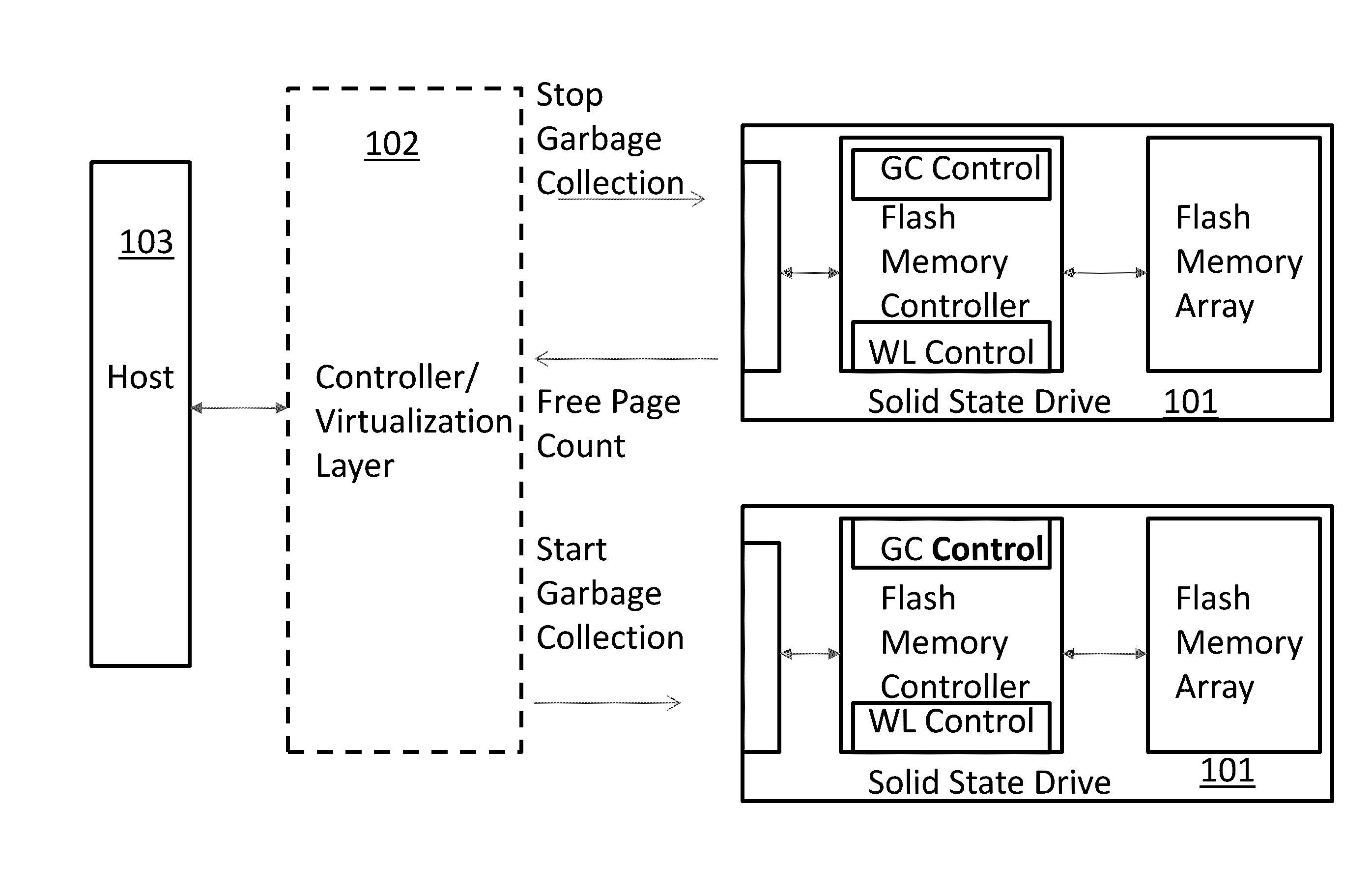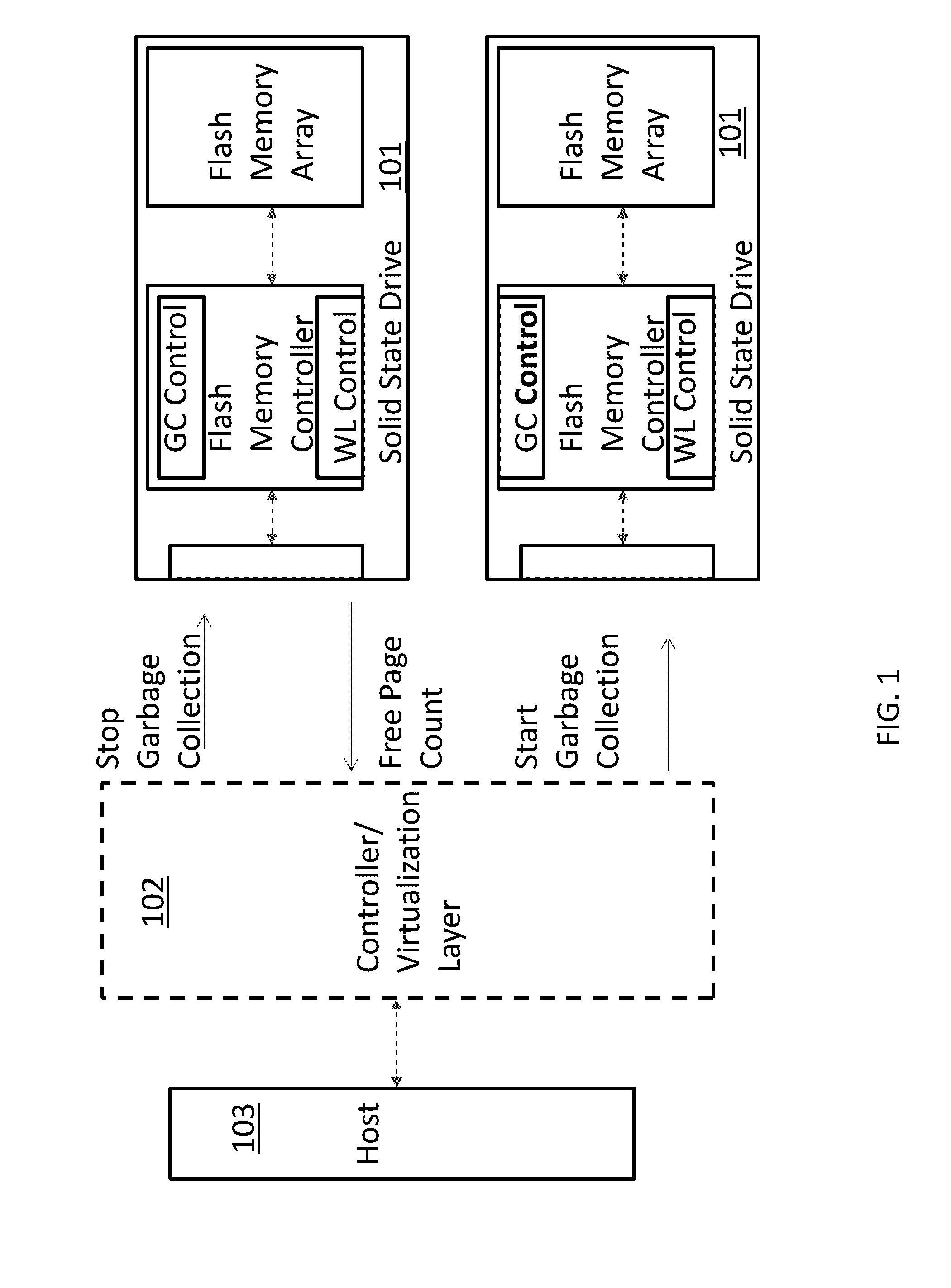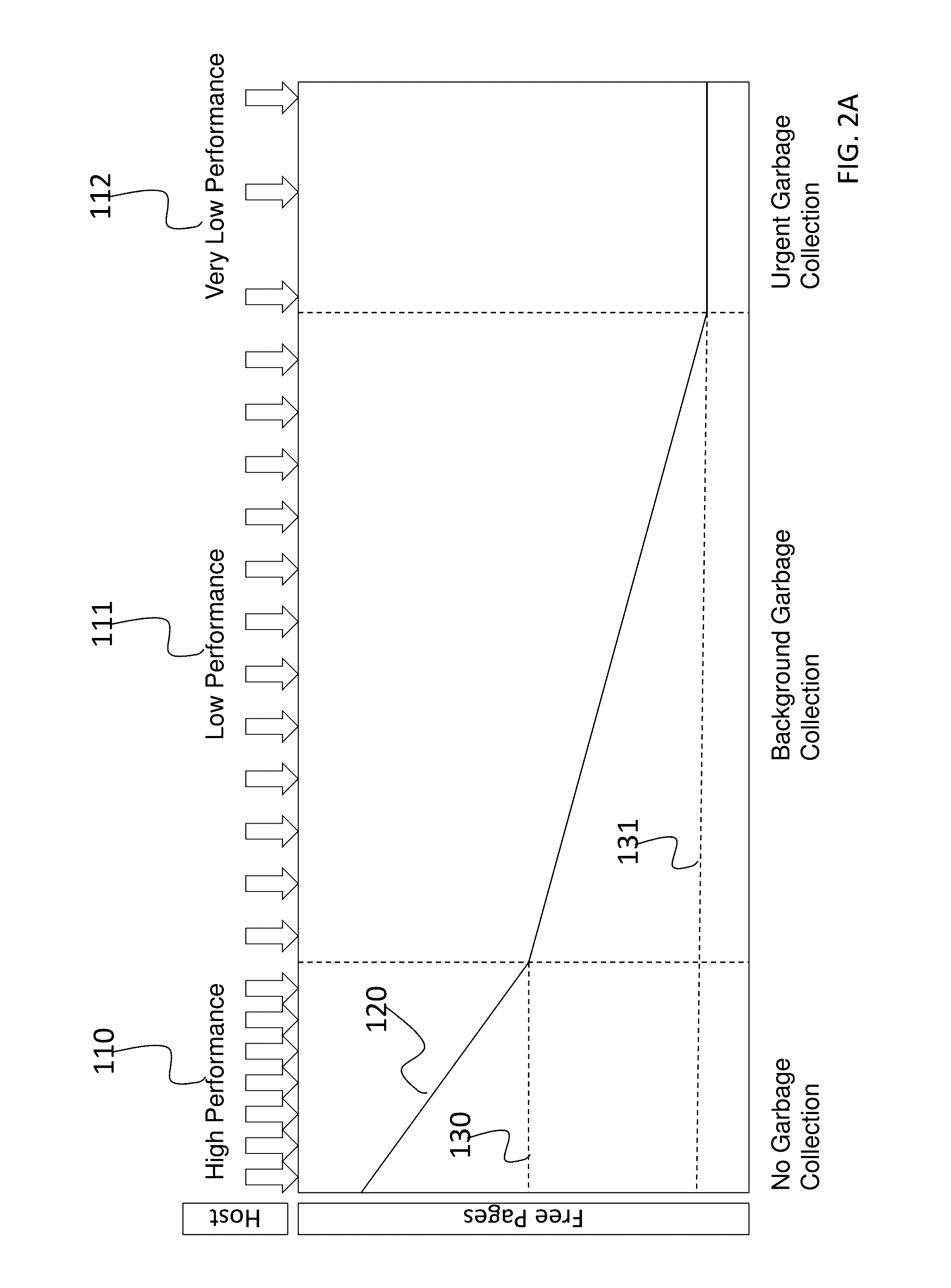Pool level garbage collection and wear leveling of solid state devices
- Summary
- Abstract
- Description
- Claims
- Application Information
AI Technical Summary
Benefits of technology
Problems solved by technology
Method used
Image
Examples
Embodiment Construction
[0027]Selected embodiments of the inventive concept are described below with reference to the accompanying drawings. These embodiments are presented as teaching examples and should not be construed to limit the scope of the inventive concept.
[0028]FIG. 1 is a block diagram illustrating a system having a pool of at least two solid state drives (SSDs) 101. Each SSD includes a flash memory controller, flash memory array, and a host interface. Each SSD flash memory controller includes a GC control module to permit the SDD device to respond to command primitives related to garbage collection (GC) control and orchestration. The GC control module may, for example, be implemented in firmware. Additionally, each SSD device may include a wear leveling (WL) module to report on device endurance.
[0029]A host computer 103 issues I / O read and write commands. In principal the host computer may directly manage orchestration of the operation of the SSDs. However, in one embodiment, a pool controller ...
PUM
 Login to View More
Login to View More Abstract
Description
Claims
Application Information
 Login to View More
Login to View More - R&D
- Intellectual Property
- Life Sciences
- Materials
- Tech Scout
- Unparalleled Data Quality
- Higher Quality Content
- 60% Fewer Hallucinations
Browse by: Latest US Patents, China's latest patents, Technical Efficacy Thesaurus, Application Domain, Technology Topic, Popular Technical Reports.
© 2025 PatSnap. All rights reserved.Legal|Privacy policy|Modern Slavery Act Transparency Statement|Sitemap|About US| Contact US: help@patsnap.com



